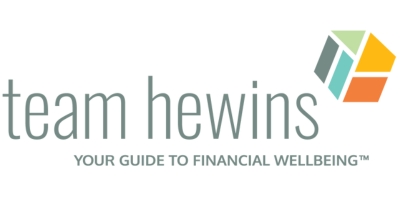Education. Is it worth it? Many of us ask this question before, during, and after college. Some believe that higher education is a needed “rite of passage” to a successful career and a comfortable life. Others argue it’s unnecessary and success can be achieved without completing or even going to college (think Bill Gates and Mark Zuckerberg). If you believe in higher education and in providing future generations with a chance to obtain a college degree, you need a plan. This is the first of two blogs focusing on education planning and 529 Plans in particular.
You have worked long and hard to be where you are. You have amassed substantial wealth to provide for yourself, your family, and even future generations. How can you help them achieve their education dreams, which may seem daunting? After all, education costs are skyrocketing. Tuition alone tends to increase at a rate of about 5 to 8 percent a year[i], although the rate of increase has slowed during the COVID-19 pandemic.
529 Plans are a savings route for investors specifically intended to cover education-related expenses. This can include tuition and fees, books, housing and food expenses, technology costs (computers, necessary technology equipment, internet access), and special needs equipment. While investors may hesitate to use 529 Plans because it is limited to education expenses, the ability to change beneficiaries, and even account owners, provides more flexibility. Keep in mind that 529 Plans can also cover education expenses for qualifying private K-12 tuitions (up to $10,000 a year), two-year associate degree programs, trade schools, and vocational schools.[ii]
There are two types of 529 plans available:
- Education Savings Plan (ESP)
- Prepaid Tuition Plan (PTP)
While these two options are available for education savings under the 529 umbrella, 529 ESP accounts are far more common than the PTP accounts.
529 Education Savings Plan – A Deeper Dive
As many of you know, a 529 Education Savings Plan (529 Plan, for short) is tax-deferred, and most of the time, a tax-exempt investment vehicle used to save for your child’s future college education. If used for qualifying education expenses, withdrawals are completely tax and penalty-free! Combined with well-diversified portfolio options and potential tax breaks in certain states, the decision could be a no-brainer for some.
How much can you contribute?
While contribution limits still exist, they are quite high and vary by state. For example, a total contribution limit for California is, uncoincidentally, $529,000 per account; for Florida, it is $418,000 per account. While the contributions are somewhat limited, growth of the 529 Plans is never capped. Some states allow for tax credits up to a certain amount of 529 Plan contributions; other states do not have that option.
Bear in mind that a single person can only contribute up to $15,000 (in 2021) to each beneficiary without triggering a gift tax filing. Anything above that amount, while within your lifetime exclusion, is still required to be reported on your gift tax return for the year of your contribution. A 529 Plan “superfunding” strategy can be utilized by contributing up to 5 years’ worth of the annual exclusion amount (up to $75,000 per person; a couple giving to one child could gift up to $150,000) in a single year. Be mindful that this strategy requires close monitoring by your financial advisor and your CPA.
What about distributions?
Unlike UTMA plans that must be distributed to the beneficiaries as they reach the age of majority (18, 21, or 25, depending on the state), 529 Plans do not have an age limitation on distributions. The beneficiary can be 18 years old and a freshman in college or 35 years old and a Ph.D. student. As long as they are named beneficiaries on the 529 Plan, they are free to take qualified distributions at any time.
The federal government went even further with 529 Plans and now allows tax-free distributions to cover education expenses for private or public elementary and secondary schools (up to $10,000 a year per beneficiary) and even allowing up to $10,000 in student loan repayments (one-time limit per borrower). Not all states conform to these rules. For example, these distributions would be subject to state income tax in California.
What happens if you take an unqualified distribution?
As with any other specialized account with a designated purpose (think HSA), if funds are not used for a specified purpose, gains become taxable as ordinary income upon distribution, and penalties apply. In this case, if 529 Plan funds are withdrawn for purposes other than education, you will pay income tax and a 10% penalty on the earnings portion of the distribution. California also imposes an additional 2.5% state income tax penalty, and some states may try to recapture any tax benefit received with the contribution made.[iii] There are a few exceptions, however. Continue reading, and you will see that there are other ways to use the 529 Plan funds if the current beneficiary is not interested in college.
Is there a “best” 529 Plan?
Each state sponsors a 529 Plan, and as we mentioned earlier, some states provide further tax benefits if you use the 529 Plan from your state of residence. Beyond the tax issues, it is important to look at the investment options, costs, and diversification available in the individual state Plans. Your financial advisor should be able to help you select the optimal 529 Plan to fit your needs.
Now that we’ve gone through the intricacies of 529 Plans, what are some planning strategies you can employ using these plans? Stay tuned for Part 2 of our blog series, coming tomorrow!
[i] Finaid.org. 2021. Tuition inflation. [online] Available at: <https://finaid.org/savings/tuition-inflation/> [Accessed 9 September 2021].
[ii] Schwab-Pomerantz, C., 2021. 529 Accounts: What Happens When Your Child Doesn’t Go to College?. [online] Schwab Brokerage. Available at: <https://www.schwab.com/resource-center/insights/content/529-account-what-happens> [Accessed 9 September 2021].
[iii] McKenna, K., 2021. Parents Can Now Use 529 Plans to Pay for Private School, But Should They? | Darrow Wealth Management. [online] Darrow Wealth Management. Available at: <https://darrowwealthmanagement.com/blog/paying-for-private-school-with-a-529-plan/> [Accessed 10 September 2021].
Team Hewins, LLC (“Team Hewins”) is an SEC registered investment adviser; however, such registration does not imply a certain level of skill or training, and no inference to the contrary should be made. We provide this information with the understanding that we are not engaged in rendering legal, accounting, or tax services. We recommend that all investors seek out the services of competent professionals in any of the aforementioned areas.

